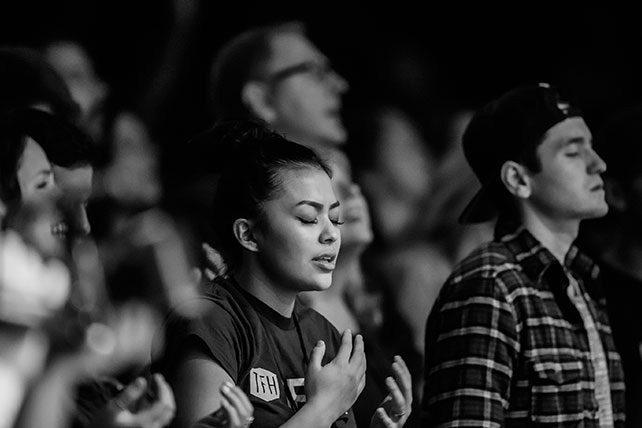There is something of a parallel in our encounter of expressive worship toward God: It is not simply a spiritual encounter. Worship is an embodied act; we do not simply worship the Lord in our hearts; we do so with our whole integrated being.
But there’s one more thing.
We see it when we look through the final lens, the practical. Neuroscience has taught us about something called ‘proprioceptive feedback.’ When we physically act in accordance with an emotion, we encourage it. Sing when you’re happy, and your joy will be multiplied. And when we act in contradiction with an emotion, we discourage it. When you’re angry, take a deep breath; slow down; smile; and the anger dissipates.
Fine, you might say, but that doesn’t mean that we all confirm or contradict an emotion in the same way. Maybe singing makes your happiness greater, but it doesn’t for me.
Well, you’d be surprised. The gestures that correspond to emotion and expressive worship have surprisingly universal application. Sociologists tell us that we mark sadness by a slow walk with a downcast head, and with halting speech in the lower registers of our voice. Anthropologists have studied facial expressions in various global contexts, including those of pre-literate tribes who had no prior interaction with the outside world—and discovered that surprise, sadness and other emotions meant predictable configurations of the eyes, mouth and jaw.
When you take those two things together—how actions confirm or redirect emotions and how universally applicable many of those actions are—we may find in the Psalms practical wisdom for our worship.* Clap because it awakens your soul to the reality that God reigns victorious; sing because there is more to this life than what we can see; shout because the pain is burning us inside, or because the joy is breaking through; lift your hands because you are empty, because you surrender, because God is on His throne in heaven. And even when you feel none of these things, you may do these things for the feelings may follow. Sometimes, joy needs to be chastened by bowing the knee in confession. Sometimes sorrow needs to be shaken off by dancing in protest of its power.
Not all must dance or clap or kneel or sing or shout. And we certainly need not do all these things in every service. The Psalms do not offer us commands about how we must worship; rather, they give us insight into the nature of worship: an embodied act.
So the next time your worship leader exhorts you to clap or to raise your hands, remember that she is joining a long line of worship leaders who call us into expressive worship of God with our whole beings—with our emotions and with our bodies—and not merely in our hearts.
_________________________________________________
*We certainly cannot extrapolate from studies about gesture and emotion or facial expression and emotion to say that all the physical actions in worship mean the same thing for everyone. They don’t even mean the same thing in different contexts. For example, clapping can display both aggression and joy—in the same culture! But it is enough to make us wonder if there is some wisdom beyond the contexts of the Psalms for clapping, singing, dancing and more.



